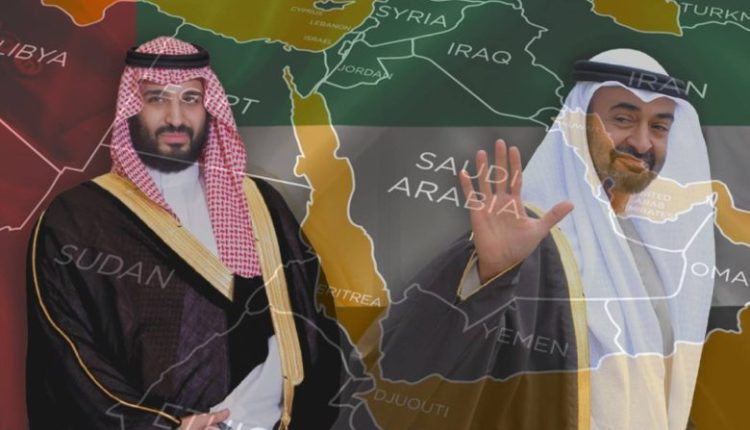From Darfur to Mocha — How Riyadh and Abu Dhabi Invested Money to Build a Mercenary Network
How are Saudi and Emirati funds invested in dismantling the security of communities? The answer is not a one-off cash transfer but the conversion of money into a politically engineered rent-seeking structure: recruitment networks, financing lines, logistical sanctuaries, and diplomatic cover that allow paid armed groups to operate and commit violations on behalf of outside interests. Through financial and political mechanisms, the UAE and Saudi Arabia did not merely create a local force; they manufactured a market for violence that can be directed wherever regional interests agree. What happened in Al-Fashir and Darfur is not an anomaly — it is a practical experiment in turning tribal force into a commodity sold and exploited to impose influence without direct political cost.
Al-Fashir, then, is not an isolated case; it is an operational laboratory that refined an exportable model of repression: bombing camps, raiding hospitals, field executions, systematic looting, and using sexual violence as a tactic of social terror. Over the past decade this model became transferable; sending Sudanese fighters to Yemen was not a random development but the deliberate expansion of a policy that relies on mercenaries as a cheap and politically convenient alternative. This report analyzes how that mechanism was designed, how it was implemented in Sudan and redeployed in Yemen, and how the Yemenis — their army and tribes — confronted it.
The Mercenary Market — From Darfur to Yemen’s West Coast
What the Rapid Support Forces carried out in Al-Fashir and Darfur was not mere chaotic violence but a planned model that shows how Gulf money can be transformed into an organized instrument of repression. Saudi Arabia and the UAE did not stop at supporting this experiment; they worked to replicate it in Yemen, trying to turn the country into an open version of Sudan, where land and people become subject to total control through hired tools. The goal was clear: dismantle social fabric, subdue populations, and create security vacuums that permit domination without facing direct political consequences.
Over the last decade, the coalition ensured the deployment of large contingents of Sudanese mercenaries to Yemen, especially along the western coast. These forces were not used only for conventional fighting but to carry out occupation and intimidation tasks, leveraging their Sudanese experience in imposing order by force. Their deployment covered Al-Mokha, Al-Khoukha and other coastal and mountainous zones, where their roles included psychological repression, control enforcement, and destruction of communities’ capacity to resist — as if Yemen were a test site replicating Al-Fashir and Darfur.
The field violations committed by Sudanese mercenaries in Yemen were horrific and documented: rape of women before their relatives, assaults during searches, looting of jewelry and property, direct threats of killing or forced displacement for families who complained, and indiscriminate shelling of residential neighborhoods. These acts were not isolated incidents but a standardized pattern rooted in the culture of repression these factions are trained in and exploited by their funders to gain ground without political cost.
The presence of these mercenaries did not vanish with time or media statements of withdrawal; they remained on fronts, confirming that reliance on mercenarism is not a temporary tactic but a persistent policy that aims to turn Yemen into an arena for sustained control — combining direct military action with psychological and social pressure on civilians. Linking the Sudanese and Yemeni experiences shows that what is happening in Yemen is not ephemeral criminality but a systematic strategic project of domination that continues today, paving the way for the next section, which will show how the Yemeni armed forces and tribes built a wall against this scheme.
From Al-Fashir to Al-Mokha — One Road of Mercenarism
What the UAE’s mercenaries did in Sudan under the Rapid Support Forces against civilians in Al-Fashir and Darfur is the same project the Saudi-Emirati aggression alliance sought to implement in Yemen; the transfer was not accidental or logistic failure but a strategic decision: import an armed, paid faction trained in tribal repression and systematic violence to subdue societies that naturally resist, at the lowest possible political cost for the sponsoring states.
The UAE and Saudi Arabia did not bring “brotherly forces” in diplomatic euphemisms; they activated Sudanese recruitment networks to finance, equip, and deploy elements of the Rapid Support Forces into selected Yemeni battlefields. These mercenaries were posted in axes such as Al-Mokha and Al-Khoukha and coastal and mountainous areas where their mission exceeded combat: they acted as occupying forces dedicated to sowing fear,

